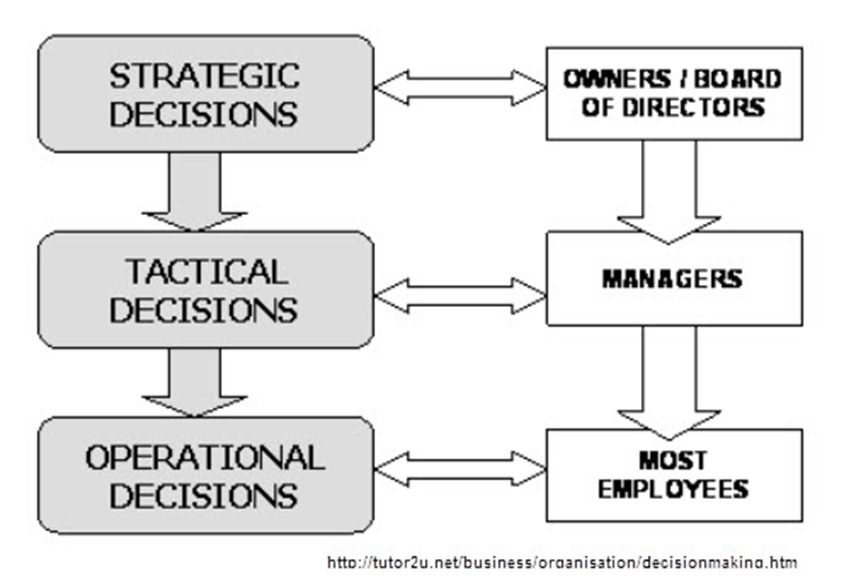But one area of study within Enterprise social strategy there has been little analysis on is what I have seen to be a “Social Glass Floor” within organizations.
While Social Business Evangelists preach to the masses in educating organizations about the business benefits of socializing business processes; creating an agile, sharing, and more open company culture, is there a “Social Glass Floor” where executives and top-level decision simply refuse to take part in this new paradigm shift?
- So if this glass floor exists, is it bad? good? necessary?
- Does their need to be an insulating social layer between employees, middle management, and top executive leadership?
- Can a company strategy really be developed using crowd dynamics?
- As the speed of business increases, can critical Strategic level business decisions be formulated without input from social business processes?
To answer these questions we need to look at management decision-making processes and models.
Common Decision Models
The model for decision-making has a very intuitive approach. In effect however this model does not work well, as it fails to take into account some key constraints prevalent today.
The decreasing time in business cycle(s), lack of trusted sources of empirical data, and decisions can be rendered moot due to speed of changing conditions which impacts the data used in the decision-making process to begin with.
As access to information accelerated with the Internet, and people are able to share that information with the push of a button, it is critical for business leaders to have a more fluid decision-making model, one primed for the deluge of Information affecting business cycles. This impacts the predictability of the decision-making.
These forces would make one think that Social capabilities in the enterprise would provide a great lubrication towards agile and comprehensive Strategic decisions. We’ll get back to that last statement in a bit…
The decision-making models needs to also have allowances for the types of decisions within the company. Strategic, Tactical, and Operational decisions are frequently made across the organizational hierarchy at different levels:
The strategic decisions level is where the executives in organizations concentrate their efforts. While operational and tactical decisions seemingly impact the business on a daily or quarterly basis, strategic decisions were historically made by Senior Executives.
I think Operational Decision Processes can be greatly improved by leveraging Social tenets. For example, by using Social Listening and Social Conversations, a.k.a Social CRM (sCRM), Sales and Marketing teams can rapidly address individual customer issues to improve the satisfaction metrics and reduce attrition rates. Engineering Teams can use Social collaborative public-facing platforms to solve specific product problems or test new ideas. Using internal Social platforms, HR departments can monitor employee satisfaction (Net Promoter Score), employee sentiment, and engagement levels using polling, surveys and other social listening tools.
Tactical Decision Processes can also be enhanced using Social tenets. Using Crowd Dynamics, HR could advertise some employee benefit options to the company, and collect, synthesis, and report on the feedback and then make the appropriate decisions. Global Supply Chain teams could leverage public-facing Social Platforms to engage with customers & partners to improve product and solutions offering by accelerating the company’s ability to react to market conditions. Engineering Teams can use Social collaborative public-facing platforms using Crowd Innovation processes to improve product innovation without incurring additional headcount
Before I discuss Strategic Decision processes, let’s look at how decisions are spread based on a survey done by SmartBlog on Leadership organization
Within a Social Business, an often mentioned component is the flattening of the organization, in how information can flow across the company. Greatly diminishing or outright eliminating of the “command & control” forces would logically lead to better decision due to the using Crowd Dynamics to make informed, educated decisions. Again, Operational and Tactical decision processes do benefit from a more distributed Decision-making process.
So if most of the Strategic Decision-Making is done at the top of the organization, is there value in re-distributing that strategic decision-making power to the lower levels?
In my experience with executives using Social Media\Social Collaboration, they are either terrified to use it as the openness at that level can often translate into political crowbars used exact negative pressures on each other. Executives will commonly promote Social Media or Social Collaboration for the organization, espouse its benefits, but you’ll NEVER catch them posting anything of true value. Why? Too risky they can be exposed or called to task for their comments. The only executive who I have seen post regularly is the CEO, probably due to some measure of insulation to the political forces at that level.
So lets say there is a “Social Glass Foor” within the company. Is that a bad thing? Is it necessary?
Lets go back to the Strategic Decision-making processes. There are clearly reasons to avoid Socializing those processes. Mergers & Acquisition strategies need to be done completely in private, downsizing or organizational transformations leading to RIFs (Reduction-in-Force), entering or leaving specific markets or industries, outsourcing and off-shoring decisions, various financial strategies on investing company short-term financial assets….these are just a few of the Strategic Decisions that probably could not be done in the openness of a Social Business.
I could not imagine Strategic Decisions like those mentioned above being publicly discussed with the larger organization. Who would want to work in such an open culture? Some Strategy is never going to be invoked, but simply discussed. CrowdSourcing Strategic decisions could lead to anarchy within the company. I think there needs to be an insulating layer in order to keep the company from disrupting into chaos.
I say there should be a clear line where the openness and free-flow of information poses greater risks to the organization. Often there are discussions on the “Top-Down and “Bottom-Up” forces required when transforming the organization’s culture towards a Social Business. The “Top-Down” executive support is needed to begin and support the transformation, but as for those executives actually posting content that has real value or using the Social capabilities to make Strategic Decisions will probably never happen in such an open construct. Leadership is about making decisions, and while many decision-making processes can be augmented using Social Business tenets, I think Strategic Decisions within the enterprise is not one of them.
So I say it DOES NOT MATTER if there is a “Social Glass Floor”, just as long as the executives can LOOK DOWN and support the rest of us in how we “Work Out Loud”




“Fear of retaliation” is a foe of “openness” in an enterprise social media. “Lead by example from top management” is an allie of “openness”. Tough fight. Guess who will win in the long term…
@lpguillaume, Depending on the culture, the lead from top management is necessary. In China and some parts of the EU, for example, without tacit approval from the management, employees may not even take part in this open sharing of ideas, information, etc. I agree with your points, and wonder what will define winning and losing in this endevour? Interesting points to consider.